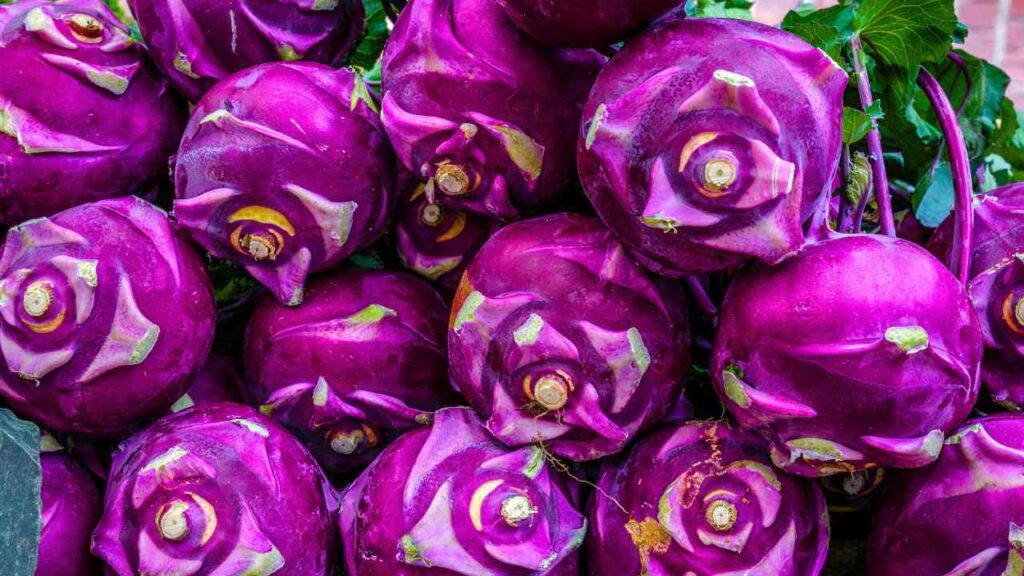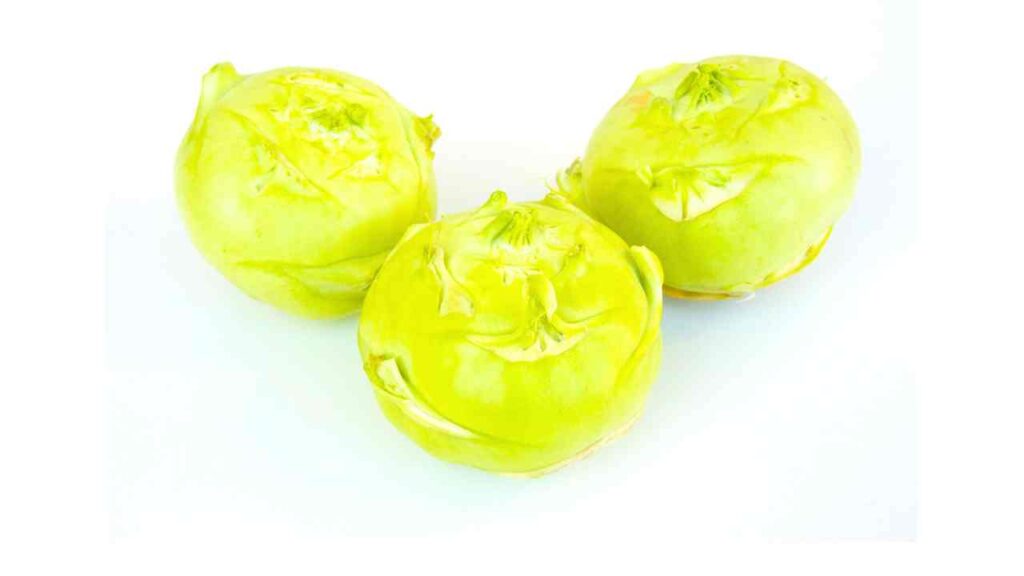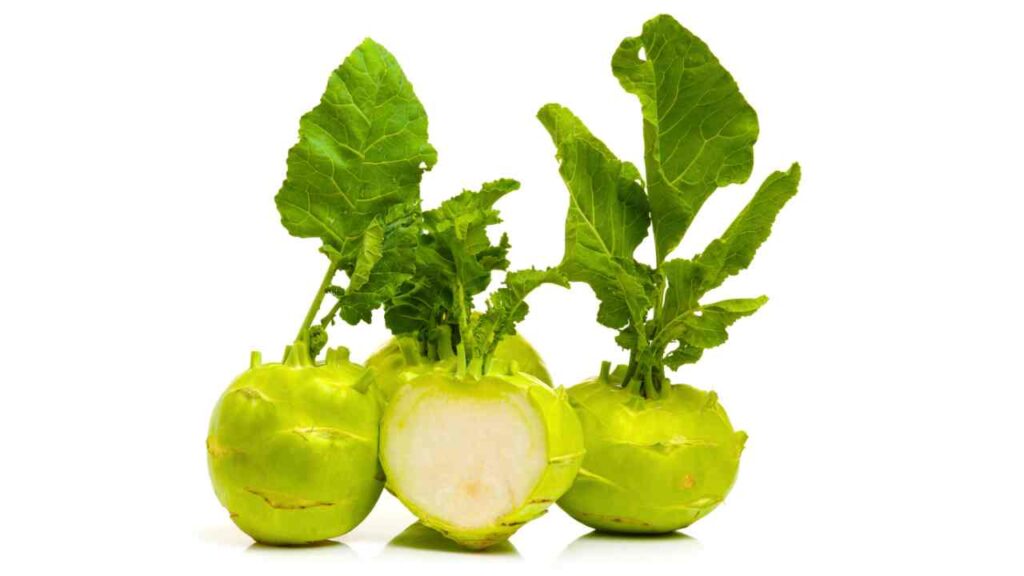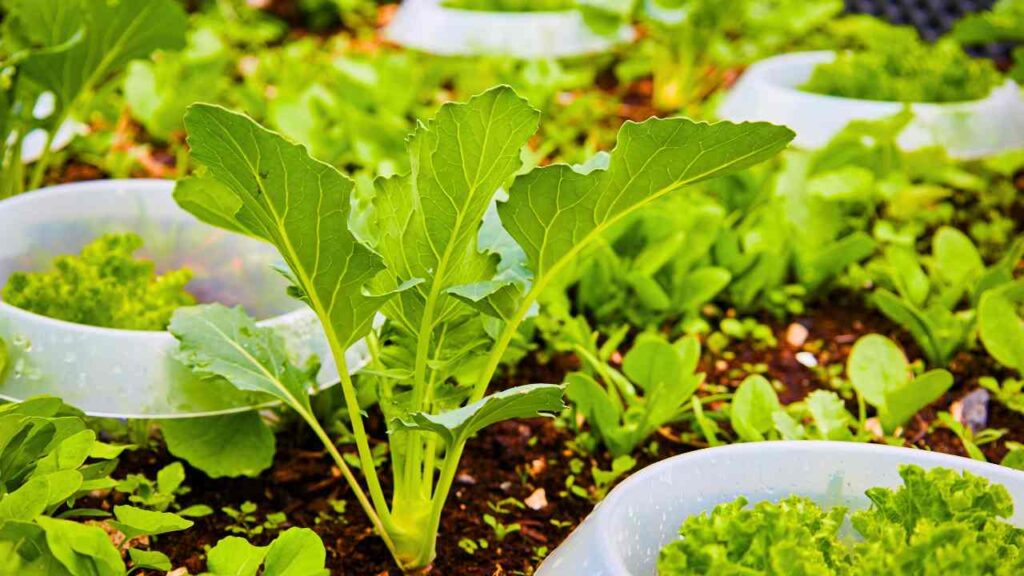Kohlrabi, which is sometimes called German turnip, is a plant that grows every two years and is in the cabbage family. Not only is kohlrabi one of the toughest veggies you can grow in your garden, but it’s also a tasty way to get extra fiber, vitamin C, or potassium.
There are 4 kinds of kohlrabi
There are many hybrid and heirloom types of kohlrabi (Brassica oleracea), and each one has its own flavor, color, size, rate of growth, and ability to fight disease. These are some of the most common types of kohlrabi:

1. Early Purple Vienna: This heirloom purple type produces reliable yields and is hardy to cold weather. It matures in 60 days. Its purple skin will add a splash of color to your yard, and its sweet, turnip-flavored flesh is delicious raw or cooked.

2. Early White Vienna: This pale green kohlrabi is smaller than its purple cousin and is ready to eat in 55 days. It does best in cool weather but can also handle heat. It tastes more like a mild turnip, whether it’s raw or cooked.

3. Grand Duke: This pale green type doesn’t get diseases easily, can grow two crops a season, and does well in many places with adverse weather. Even though their blooms are one of the biggest, Grand Duke kohlrabi are crisp, tasty, and ready to eat in just 45 to 50 days.

4. Kolibri: This bright purple mutant variety is one of the best kinds of kohlrabi for harvesting late in the season. It takes 55 days to grow to full size. When eaten raw, it feels crisp and juicy like an apple and tastes mildly sweet like cabbage.
How to Grow Kohlrabi in Your Yard

With its hardiness, kohlrabi is an inexpensive veggie to grow in a wide range of climates, whether you plant seeds outside or move seedlings you start indoors.
1. Pick a time to plant based on the weather where you live. For a spring crop in cooler northern areas, plant seeds outside as soon as the last frost has passed, or start them indoors three to four weeks before the last frost and then move them outside. People who live in cooler places can also plant kohlrabi in the middle of summer to gather in the fall. In warmer parts of the south, plant in the fall so you can gather in the winter. Keep in mind that kohlrabi plants do best in temperatures between 40 and 75 degrees Fahrenheit and that they need 45 to 60 days to fully grow, so plan your garden accordingly based on where you live.
2. Pick a spot that gets enough sun. Kohlrabi needs at least six hours of sun a day, so plant it where it will get full sun. If you plant in the middle of summer for a fall crop, you can put your seeds in a spot with some shade. The shade will help keep the seedlings cool during the hot summer months.
3. Make sure you have the right kind of dirt. Kohlrabi grows best in soil with a pH between 5.5 and 6.8. Soil that is a little more alkaline can help keep kohlrabi from getting clubroot disease. Kohlrabi plants do best in loamy, healthy soil that drains well and is full of organic matter.
4. Add nutrients to your dirt. Before you put your kohlrabi, add aged compost or manure to the soil to make it better.
5. Know how deep and how far apart to put things. Plant kohlrabi seeds nine to twelve inches apart and a quarter of an inch deep. When moving plants from inside to outside, leave five to eight inches of space between each one. If you are planting more than one row, space them out two feet apart.
Kohlrabi: How to Grow It and Take Care of It

Once you’ve planted your kohlrabi, make sure you take care of it the right way to get the most out of it.
1. Make sure the dirt stays wet. There should be an even spread of at least 1.5 inches of water on kohlrabi plants every week. Do not use too much water.
2. Cover the soil with vegetable mulch. Once your plants are five inches tall, cover the earth with a layer of organic mulch. This will stop weeds from growing, keep water in, and cool the soil.
3. Keep an eye out for diseases. You can get clubroot disease, downy mildew, and powdery mildew on kohlrabi. Adding lime to your soil is one way to get rid of clubroot, which makes leaves wilt and turn yellow and roots become twisted. Powdery mildew and downy mildew both cause yellow spots and powdery white spots, but both can be fixed with the right pesticide.
4. Keep bugs away. Krabbe cabbage is often harmed by cabbage worms and cabbage loopers. You can use insecticides to get rid of both pests, but if you want to do something more natural, try planting flowers that are close to each other. For example, thyme, nasturtiums, and onions will keep cabbage worms away, and marigolds, daisies, and dill will bring beneficial bugs that will eat cabbage loopers.
How to Get Kohlrabi in Season

You can be sure you’re cooking with the best kohlrabi possible if you follow these tips for picking it.
When to pick: Bok choy trees are ready to be picked when their bulbs are three inches across.
To collect, cut the stem just above the soil level at the plant’s base. This will separate the bulb from the root.
How to keep: You can keep kohlrabi in the fridge for up to three weeks.
Raw shredded kohlrabi tastes excellent in any salad; steamed kohlrabi is excellent in many soups; and you can even add chopped kohlrabi to your favorite stir-fry.

